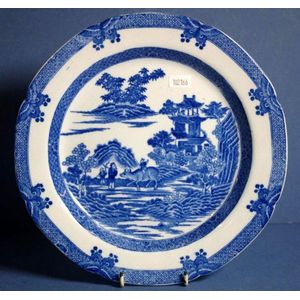William Kerr Silver Thistle Brooch with Amber Stone
You must be a subscriber, and be logged in to view price and dealer details.
Subscribe Now to view actual auction price for this item
When you subscribe, you have the option of setting the currency in which to display prices to $Au, $US, $NZ or Stg.
- Amber - More frequently used to refer to the colour, than the material from which the word is derived, amber is the fossilized resin from ancient forests. It is not produced from tree sap, but rather from plant resin. The resin is aromatic, and can drip from and ooze down trees. In colour, it may be a deep honey colour, (amber), brown, or white. As it oozes out it fills internal fissures in the tree, trapping debris such as seeds, leaves, feathers and insects. The debris trapped within the amber can assist in dating the deposit.
In its natural state it is found in rocks, on the sea floor (from where it may be washed up to the shore) and mined, using both open cut and underground techniques. About 90% of the world's amber comes from Russia. Amber has recently been discovered at Cape York in Northern Australia
Amber is often incorporated in jewellery, and used in pipe stems. The shine on the surface of amber becomes even more intense when it is worn and used regularly. Genuine amber, when rubbed, will release a slightly musky scent. - Paste / Rhinestone / Diamante - Paste (or rhinestone or diamante) is the name given to a coloured glass composition used for imitation gemstones, or to imitation gemstones made of glass.
Although the technique of glassmaking had been known for thousands of years, but it wasn't until a lead glass with similar optical properties to diamonds were invented by a German jeweller working in Paris (either "Stras" or 'Strasser") in the early 18th century that "paste" gemstones became popular.
There was no social stigma attached to wearing imitation stones, and they were worn in situations where highway robbery was a possibility. The 18th century settings were of very high quality, equivilent to real gemstone jewellery.
In the nineteeth century the quality of paste jewellery declined and it has remained the poor cousin to genuine gemstones ever since.
This item has been included into following indexes:
Visually similar items

Spode blue & white 'Buffalo' dinner plate, C:1810, with impressed Spode mark to base, Diameter 25 cm

A Chinese porcelain famille rose plate, decorated with two figures at a table in a garden, framed by a floral border, four-character seal mark to the reverse. Diameter 27 cm

An impressive Ceylon sapphire and diamond cluster ring, the oval cut sapphire of 10.06cts, surrounded by princess and round brilliant cut diamonds, with further baguette cut diamond detail to the shoulders, mounted in 18ct white gold, ring size O

An unusual circular plaque late Qing Dynasty, decorated in bright enamels with petal-shaped floral panels radiating from a central flower medallion reserved on a ground of figure scenes alternating with birds and flowers, all within a frieze of flower and
